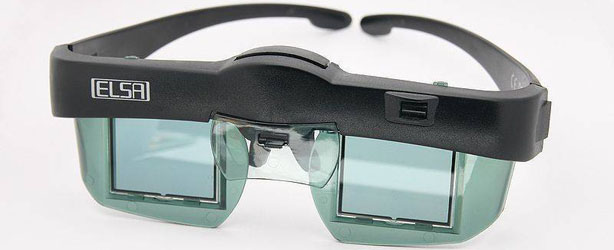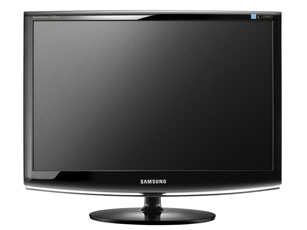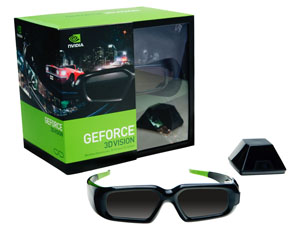
The critics said 3D was a fad that would soon follow Bad Mouth Billy Bass and Crazy Frog singles into the landfill site of novelty obsolescence, and that no one would want to wear 3D glasses in front of their screen. Nevertheless, a couple of years later we're still being bombarded by 3D movies and technology, and stereoscopic 3D finally appears to be gripping at least a large part of the consumer tech industry.
One of the key pioneers in 3D PC gaming was Nvidia, bringing out its 3D Vision kits back in 2008 – well before the mainstream 3D uprising really took off. The company not only supports 3D gaming, but makes its own active shutter glasses and USB emitters. But will 3D gaming really take off, what are the benefits of active shutter glasses, and just how much of a threat is posed by AMD's new HD3D technology? We're joined by Nvidia's senior product manager for 3D Vision Andrew Fear, and general manager of 3D Vision Phil Eisler to discuss Nvidia's 3D strategy.
Bit-Tech: In basic terms, how does 3D Vision work?
Andrew Fear: We have a system that consists of an Nvidia GeForce GPU, our 3D Vision glasses, a 3D Vision monitor and our 3D Vision driver. As the data for the game comes into the graphics processor, the 3D Vision driver essentially renders two views. It takes the DirectX information, which contains modelling, shading and everything, and creates two different views dynamically in real-time. We then take those two images, send them to a monitor running at 120Hz, and it renders left-right, left-right in that order. Then our 3D Vision emitter synchronises with our glasses and tells the active shutter glasses when to shut the left eye, and when to shut the right eye.
BT: What's the take-up of 3D Vision been like?
AF: Really good. If you have a look at the television market, you'll see some reports saying that 3D televisions are doing horribly, and others saying it's fantastic, and the reality is that it's somewhere in the middle. If you look at the data, the trend shows that the market for 3D televisions has basically been doubling from year to year, and will probably continue to double in sales until about 2014. The PC market is on a very similar trajectory of sales. We've sold multiple hundreds of thousands of pairs of 3D Vision glasses.
In fact, the core gaming audience is getting more excited about 3D in some cases than SLI. The benefit of 3D over technologies like SLI is that it's immediate, rather than just a performance benefit. Some people love that, but for others it's imperceptible; with 3D it's an instantaneous experience. If you get a game you love and play it in 3D, all of a sudden you go 'wow!'
BT: This isn't the first time Nvidia's done 3D. What's changed since the last time?
AF: I've been here 10.5 years, and I remember when I first started here – I came here from 3dfx – one of the first things I was asked to do was figure out how to sell our 3D drivers. And, to be honest with you, it didn't work then, for a lot of reasons.
I guess you'd call the model for 3D back in 2000 an open standard. There were people who made glasses, people who made graphics processors, people who made drivers and people who made displays. The idea was that we were all going to make them come together and work, but the reality was that it didn't work well. There wasn't really a strong motivation to partner together and produce a high quality experience where the glasses worked great with the display and the drivers worked properly, so it kind of all failed.
 Elsa's 3D Revelator glasses - a spectre of Nvidia's 3D - ouch
Elsa's 3D Revelator glasses - a spectre of Nvidia's 3D - ouch
So when we looked at it about four years ago, we decided to come up with a better model. One of the biggest problems was the lack of quality in ensuring that it was a wonderful out-of-the-box experience with customers. We needed to get 3D to work on an LCD monitor and produce high-quality glasses that people would want. So we married those two parts of the technology with the driver, and came up with 3D Vision. We have patents issued on the technique for doing 3D on an LCD desktop monitor, because we helped to pioneer that.
We then set out to produce really high-quality glasses – we're pretty proud of them, and they've received a pretty good response from the community. Then we worked a lot on our software to make sure that it all worked together, and that's how 3D Vision was born.
One of the key pioneers in 3D PC gaming was Nvidia, bringing out its 3D Vision kits back in 2008 – well before the mainstream 3D uprising really took off. The company not only supports 3D gaming, but makes its own active shutter glasses and USB emitters. But will 3D gaming really take off, what are the benefits of active shutter glasses, and just how much of a threat is posed by AMD's new HD3D technology? We're joined by Nvidia's senior product manager for 3D Vision Andrew Fear, and general manager of 3D Vision Phil Eisler to discuss Nvidia's 3D strategy.
Bit-Tech: In basic terms, how does 3D Vision work?
Andrew Fear: We have a system that consists of an Nvidia GeForce GPU, our 3D Vision glasses, a 3D Vision monitor and our 3D Vision driver. As the data for the game comes into the graphics processor, the 3D Vision driver essentially renders two views. It takes the DirectX information, which contains modelling, shading and everything, and creates two different views dynamically in real-time. We then take those two images, send them to a monitor running at 120Hz, and it renders left-right, left-right in that order. Then our 3D Vision emitter synchronises with our glasses and tells the active shutter glasses when to shut the left eye, and when to shut the right eye.
BT: What's the take-up of 3D Vision been like?
AF: Really good. If you have a look at the television market, you'll see some reports saying that 3D televisions are doing horribly, and others saying it's fantastic, and the reality is that it's somewhere in the middle. If you look at the data, the trend shows that the market for 3D televisions has basically been doubling from year to year, and will probably continue to double in sales until about 2014. The PC market is on a very similar trajectory of sales. We've sold multiple hundreds of thousands of pairs of 3D Vision glasses.
In fact, the core gaming audience is getting more excited about 3D in some cases than SLI. The benefit of 3D over technologies like SLI is that it's immediate, rather than just a performance benefit. Some people love that, but for others it's imperceptible; with 3D it's an instantaneous experience. If you get a game you love and play it in 3D, all of a sudden you go 'wow!'
BT: This isn't the first time Nvidia's done 3D. What's changed since the last time?
AF: I've been here 10.5 years, and I remember when I first started here – I came here from 3dfx – one of the first things I was asked to do was figure out how to sell our 3D drivers. And, to be honest with you, it didn't work then, for a lot of reasons.
I guess you'd call the model for 3D back in 2000 an open standard. There were people who made glasses, people who made graphics processors, people who made drivers and people who made displays. The idea was that we were all going to make them come together and work, but the reality was that it didn't work well. There wasn't really a strong motivation to partner together and produce a high quality experience where the glasses worked great with the display and the drivers worked properly, so it kind of all failed.
 Elsa's 3D Revelator glasses - a spectre of Nvidia's 3D - ouch
Elsa's 3D Revelator glasses - a spectre of Nvidia's 3D - ouchSo when we looked at it about four years ago, we decided to come up with a better model. One of the biggest problems was the lack of quality in ensuring that it was a wonderful out-of-the-box experience with customers. We needed to get 3D to work on an LCD monitor and produce high-quality glasses that people would want. So we married those two parts of the technology with the driver, and came up with 3D Vision. We have patents issued on the technique for doing 3D on an LCD desktop monitor, because we helped to pioneer that.
We then set out to produce really high-quality glasses – we're pretty proud of them, and they've received a pretty good response from the community. Then we worked a lot on our software to make sure that it all worked together, and that's how 3D Vision was born.

MSI MPG Velox 100R Chassis Review
October 14 2021 | 15:04










Want to comment? Please log in.